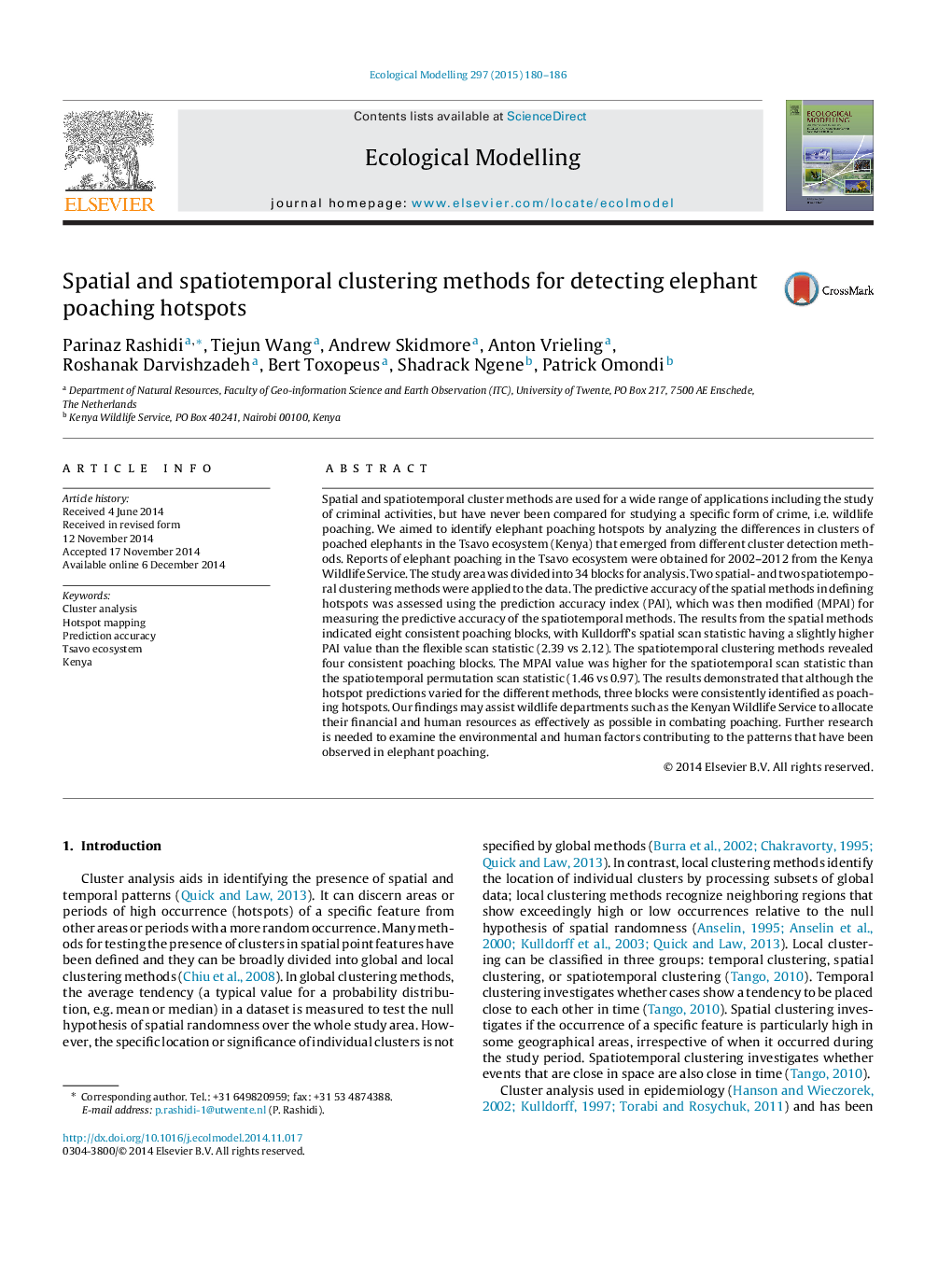| Article ID | Journal | Published Year | Pages | File Type |
|---|---|---|---|---|
| 4375827 | Ecological Modelling | 2015 | 7 Pages |
•We compared four clustering methods to identify elephant poaching hotspots.•We modified an existing predication accuracy index to incorporate the temporal domain.•Elephant poaching in Tsavo was not distributed randomly in space and time.•Spatial methods gave similar results but spatiotemporal methods were less uniform.•Three out of 34 blocks were consistently identified as poaching hotspots in Tsavo.
Spatial and spatiotemporal cluster methods are used for a wide range of applications including the study of criminal activities, but have never been compared for studying a specific form of crime, i.e. wildlife poaching. We aimed to identify elephant poaching hotspots by analyzing the differences in clusters of poached elephants in the Tsavo ecosystem (Kenya) that emerged from different cluster detection methods. Reports of elephant poaching in the Tsavo ecosystem were obtained for 2002–2012 from the Kenya Wildlife Service. The study area was divided into 34 blocks for analysis. Two spatial- and two spatiotemporal clustering methods were applied to the data. The predictive accuracy of the spatial methods in defining hotspots was assessed using the prediction accuracy index (PAI), which was then modified (MPAI) for measuring the predictive accuracy of the spatiotemporal methods. The results from the spatial methods indicated eight consistent poaching blocks, with Kulldorff's spatial scan statistic having a slightly higher PAI value than the flexible scan statistic (2.39 vs 2.12). The spatiotemporal clustering methods revealed four consistent poaching blocks. The MPAI value was higher for the spatiotemporal scan statistic than the spatiotemporal permutation scan statistic (1.46 vs 0.97). The results demonstrated that although the hotspot predictions varied for the different methods, three blocks were consistently identified as poaching hotspots. Our findings may assist wildlife departments such as the Kenyan Wildlife Service to allocate their financial and human resources as effectively as possible in combating poaching. Further research is needed to examine the environmental and human factors contributing to the patterns that have been observed in elephant poaching.
